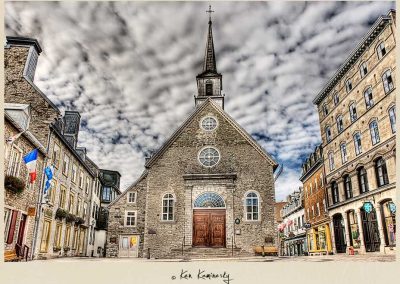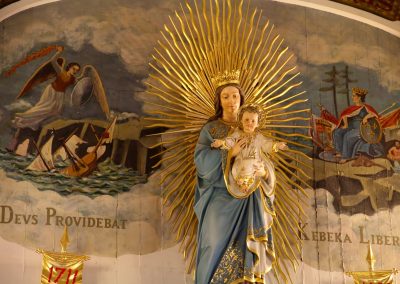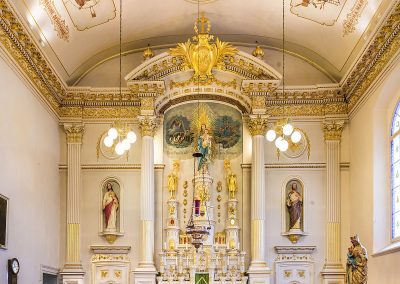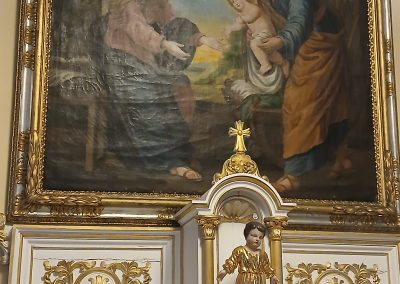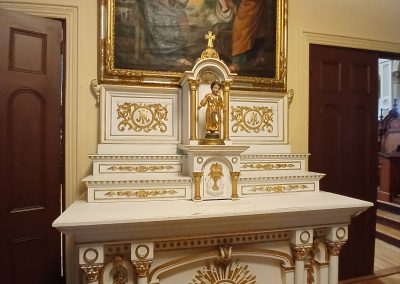Our Lady of the Victory
A church built in the 17th century:
In the lower town of Old Quebec is one of the oldest churches in Canada and is called Notre-Dame-des-Victoires. Its construction began in 1688 and was completed in 1723. Originally this church was dedicated to the Infant Jesus, but in 1690 it received the name of Our Lady of Victory following the retreat of the English admiral William Phips.
War between France and England:
It all began when, in 1690, an English and Protestant fleet attempted to seize Quebec, again threatening the main city of New France. On the morning of October 16, the fleet of ships commanded by William Phips dropped anchor in front of Quebec. Admiral Phips immediately dispatched an officer to summon the place to surrender. Governor Frontenac, piqued at the lack of propriety in the terms of the summons, said to him, “Go, I will answer your master by the mouth of my cannons; let him learn that it is not in this way that a man like me is summoned.” Despite the confidence asserted by the governor, the city’s defenses are weak. The anxiety is palpable among the inhabitants who pray to the Virgin Mary to come to their aid in order to repel the English threat.
On October 18, the enemy attempted a raid between Quebec City and Beauport. But he was repulsed with loss. That same evening, the guns of Phipps’ fleet began the bombardment of the city, which was continued the next day. “As the danger increased, however, public prayers redoubled throughout the city. The citizens had taken the Blessed Virgin as their patron and protector. One of her banners had been brought from Montreal by Father Joseph Serré de la Colombière, chaplain of the militia, who, on his descent, had placed it as a sign of salvation at the bow of the canoe he was boarding. This banner was carried in procession in all the churches… The ladies had made a solemn vow to go on pilgrimage to the church of the lower town, if the Blessed Virgin obtained their deliverance”.
Exhibition of a painting of the Holy Family:
A painting of the Holy Family, belonging to the Ursulines, was exhibited at the top of the bell tower of the cathedral. However, the trust was such in Quebec City,” wrote Ferland, “that public devotions continued as in ordinary times. From the roadstead one could see men, women and children going to church services without appearing to be dealing with the artillery of the English.
Enemies who tried to take Quebec City by the valley of the St. Charles River were victoriously repulsed by the Canadians. Discouraged by his successive defeats, Admiral Phipps abandoned his project and turned back completely discouraged. The inhabitants of Quebec City emerged as if from a dream when, on October 21, they saw the fleet disappear behind the cliffs of Lévis. The ladies of Quebec City hastened to fulfill their wish and made their solemn pilgrimage to the Lower Town church. This victory caused a sensation in France.
It is from this year of the triumph of the French arms against the English and the coalised Savages that the feast of Our Lady of Victory was celebrated every year in the colony, on the fourth Sunday of October, in the modest sanctuary of the lower town.
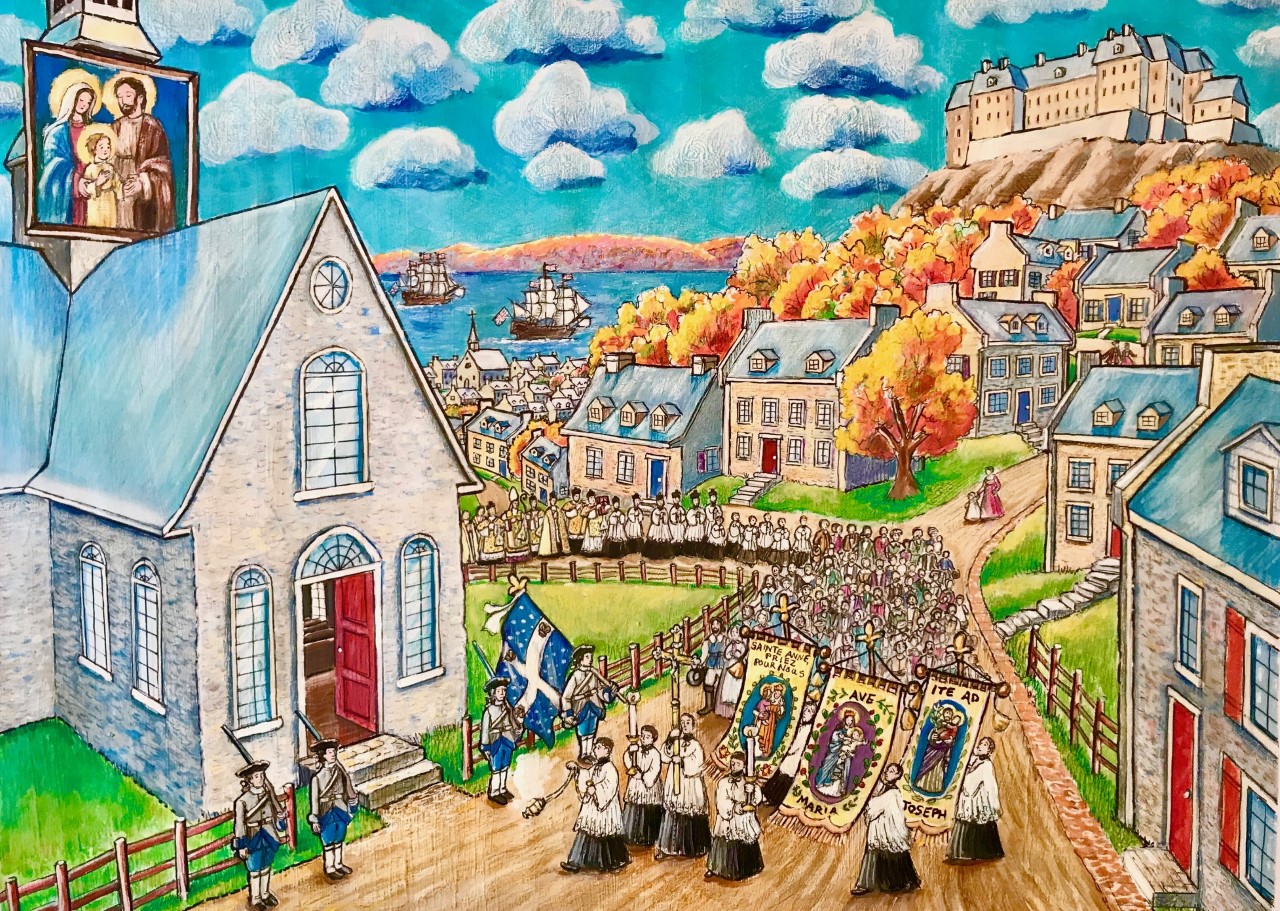
Sources :
- Narcisse-Eutrope Dionne, Historique de l’église de Notre-Dame des Victoires, basse-ville de Québec. Québec. 1888. Pp. 13-23.
- et du site web http://www.tradition-quebec.ca/2018/08/kebeka-liberata-notre-dame-protege-la.html

